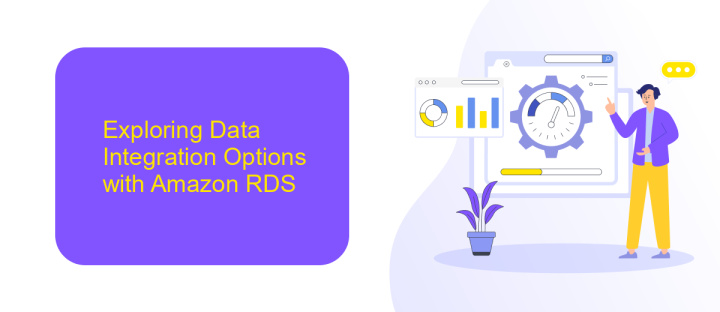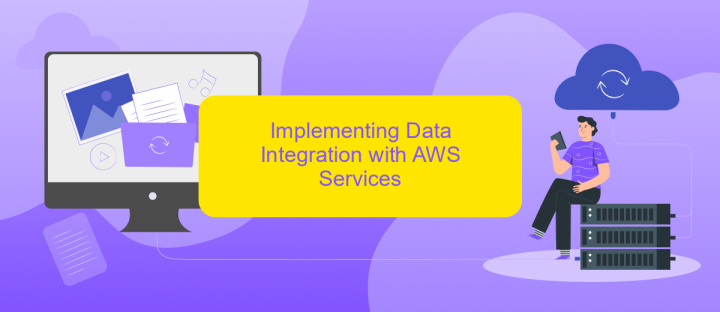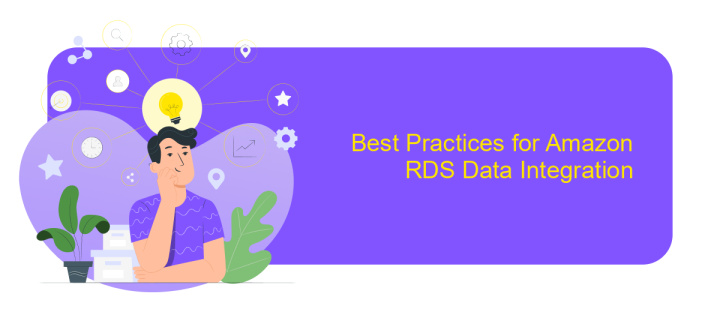Amazon RDS Data Integration
Amazon Relational Database Service (RDS) offers a robust platform for seamless data integration, streamlining the management of relational databases in the cloud. By providing automated backups, scaling, and patching, Amazon RDS enhances operational efficiency. This article explores the key features and benefits of Amazon RDS, highlighting its role in optimizing data workflows and ensuring secure, reliable access to critical business information across diverse applications.
Understanding Amazon RDS and Data Integration Needs
Amazon Relational Database Service (RDS) is a managed database service that simplifies the setup, operation, and scaling of databases in the cloud. It supports multiple database engines, such as MySQL, PostgreSQL, and Oracle, providing flexibility and scalability for various applications. RDS automates administrative tasks like backups, patching, and hardware provisioning, allowing developers to focus on building applications rather than managing infrastructure.
- Automated backups and snapshots for data protection.
- Multi-AZ deployments for high availability and failover support.
- Read replicas for enhanced read performance and scalability.
- Seamless integration with other AWS services like Lambda and S3.
- Security features including encryption and network isolation.
Data integration is crucial for organizations using Amazon RDS, as it ensures seamless data flow between RDS and other systems. Effective data integration facilitates real-time analytics, reporting, and data-driven decision-making. By leveraging tools like AWS Glue, Data Pipeline, and third-party solutions, businesses can efficiently move and transform data across diverse environments, enhancing operational efficiency and supporting strategic objectives.
Exploring Data Integration Options with Amazon RDS

Amazon RDS offers a versatile platform for integrating data across various applications and services, enabling seamless data flow and management. One of the primary methods of integration is through the use of native database engines supported by RDS, such as MySQL, PostgreSQL, and Oracle. These engines provide built-in tools and features like triggers, stored procedures, and replication, which can be leveraged to create robust data pipelines. Additionally, Amazon RDS supports AWS Data Migration Service (DMS), which simplifies the process of migrating and replicating data between RDS instances and other databases, both on-premises and in the cloud.
For those seeking a more automated approach, third-party integration platforms like ApiX-Drive can be invaluable. ApiX-Drive offers a user-friendly interface to connect Amazon RDS with numerous applications without the need for extensive coding. By utilizing ApiX-Drive, businesses can streamline data workflows, ensuring that data is consistently synchronized and up-to-date across all systems. This integration capability not only enhances operational efficiency but also allows organizations to focus on strategic initiatives by reducing the time and resources spent on manual data management tasks.
Implementing Data Integration with AWS Services

Integrating data with Amazon RDS using AWS services can significantly enhance the efficiency and scalability of your applications. The process involves utilizing a variety of AWS tools to ensure seamless data flow and management. By leveraging these services, businesses can achieve a more robust data architecture that supports real-time analytics and decision-making.
- Amazon S3: Store and retrieve vast amounts of data, providing a reliable source for data integration.
- AWS Glue: Automate the extract, transform, and load (ETL) processes, making it easier to prepare and integrate data.
- Amazon Kinesis: Process and analyze streaming data in real-time, enabling immediate insights and actions.
- AWS Data Pipeline: Orchestrate data movement and transformation, ensuring data is available where and when it's needed.
By implementing these AWS services, organizations can create a cohesive data integration strategy that supports diverse data sources and destinations. This approach not only improves data consistency and accuracy but also enhances the ability to scale operations as business needs evolve. Ultimately, leveraging AWS for data integration empowers companies to make data-driven decisions with greater speed and confidence.
Best Practices for Amazon RDS Data Integration

Integrating data with Amazon RDS requires a strategic approach to ensure seamless performance and reliability. Careful planning and adherence to best practices can significantly enhance the efficiency of your data integration processes. Start by understanding your data requirements and selecting the appropriate RDS instance type that aligns with your workload demands.
Security is paramount when dealing with data integration. Ensure that your data is encrypted both in transit and at rest. Implement robust access controls to restrict unauthorized access and regularly audit your security settings. Monitoring and logging are also crucial for maintaining the integrity and performance of your RDS instances.
- Use AWS Data Pipeline or AWS Glue for efficient data movement and transformation.
- Regularly backup your data and test your disaster recovery plan.
- Optimize queries and indexes to improve database performance.
- Leverage Amazon CloudWatch for monitoring and setting up alerts for critical metrics.
By following these best practices, you can ensure that your Amazon RDS data integration is both secure and efficient. Continually assess and refine your strategies to adapt to evolving business needs and technological advancements.


Managing and Monitoring Data Integration Pipelines
Effective management and monitoring of data integration pipelines in Amazon RDS are crucial for ensuring seamless data flow and system reliability. To optimize these processes, it's essential to establish clear protocols for error handling and performance tracking. Utilizing monitoring tools like Amazon CloudWatch can provide real-time insights into pipeline performance, enabling quick identification and resolution of potential bottlenecks. Regular audits and performance reviews are also recommended to maintain efficiency and adapt to evolving data needs.
For enhanced data integration management, leveraging third-party services such as ApiX-Drive can be beneficial. ApiX-Drive offers automated integration solutions that simplify the connection between various data sources and Amazon RDS. This service allows for streamlined setup and management of data workflows, reducing manual intervention and the risk of errors. By integrating ApiX-Drive, organizations can focus more on data analysis and decision-making rather than the complexities of data integration, ensuring a robust and efficient data ecosystem.
FAQ
What is Amazon RDS Data Integration?
How can I automate data integration with Amazon RDS?
What are the benefits of integrating Amazon RDS with other systems?
Is it possible to integrate Amazon RDS with cloud applications?
What challenges might I face when integrating Amazon RDS with other data sources?
Time is the most valuable resource for business today. Almost half of it is wasted on routine tasks. Your employees are constantly forced to perform monotonous tasks that are difficult to classify as important and specialized. You can leave everything as it is by hiring additional employees, or you can automate most of the business processes using the ApiX-Drive online connector to get rid of unnecessary time and money expenses once and for all. The choice is yours!

